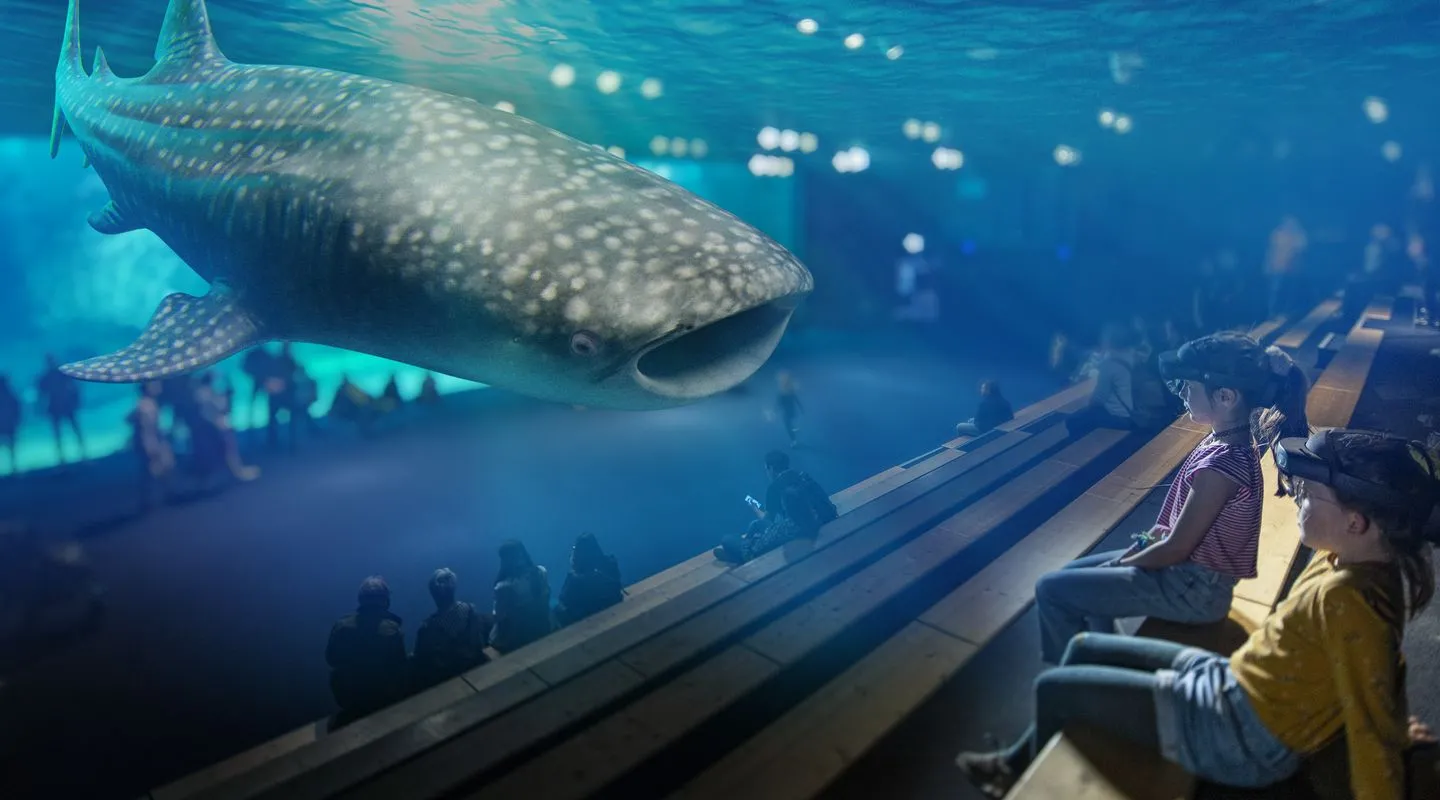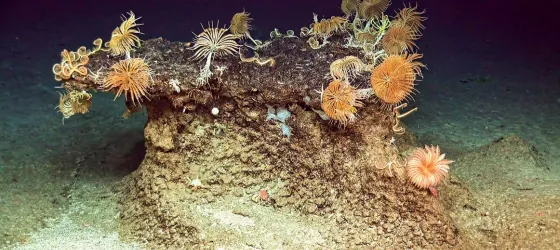Animal in augmented reality
The whale shark is one of the impressive figures that you will be able to discover in the Grand Large experience.
They are often accompanied by tuna and mackerel, pelagic fish with which they accomplish great migrations. Female whale sharks migrate over shorter distances than the males.
Where is the animal to be found?
This pelagic shark can be found between the surface and depths of 120 metres but they can also dive to a depth of 1,000 m. They can also be seen in lagoons, close to estuaries and river mouths during the periods when the fish and invertebrates they feed on proliferate.The whale shark lives in all the tropical and warm temperate seas with the exception of the Mediterranean. You can come across them in the Atlantic, from New York to Brazil and from Senegal to the Gulf of Guinea; in large parts of the Indian Ocean and also in the Pacific
How can it be recognised?
The whale shark, Rhincodon typus, is the largest fish in the world. Their size varies between 5 and 12 metres but they can reach a length of 15 metres, that’s to say longer than a bus! They are nevertheless smaller than the blue whale, the largest mammal in the animal kingdom. Their massive body is characterised by three large transverse lines and five vertical gill slits above the pectoral fins. They use these gills not only to breathe but also to filter the water they absorb in large amounts when they eat. Their back is coloured a bluish-grey speckled with white spots and lines forming a checked pattern whereas their belly is a plain light colour. This distribution of spots and lines makes it possible to identify these sharks: each pattern is unique.
What is distinctive about it?
The whale shark’s breeding habits are poorly known: we do not know where they mate, nor where the females give birth; we do not know the length of their gestation period, but it is thought they reproduce every two years. Their mode of reproduction is ovoviviparous, that’s to say the eggs develop and hatch inside the female which then gives birth to viable shark pups. Sexual maturity is reached when the shark reaches a length of 9 m, aged about 20 to 30.
Threat and protective measure
- The whale sharks’ late sexual maturity weighs on this species’ survival, as it does on that of other sharks. On the IUCN red list, 37% of sharks and rays are threatened with extinction worldwide.
- According to the IUCN it is probable that the global population of whale sharks has fallen by 50% over the last 75 years.
- The whale sharks’ high market value makes them a target for Asian markets: their fins and flesh are consumed, and they are also used in Chinese medicine.
- Fishing, like accidental catches are a threat to the whale shark, as are pollution and collisions with ships.












